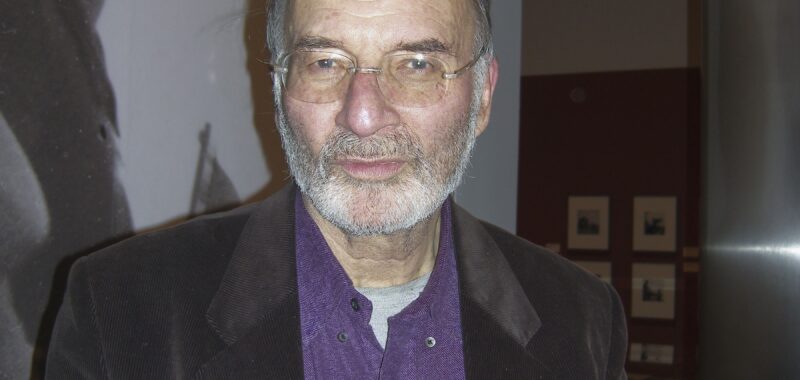Art critic, educator, and photographer Max Kozloff died at the age of 91 on Sunday, April 6. He passed away at his home in New York City after living with Parkinson’s disease for over a decade, according to an Instagram post by his spouse, the artist Joyce Kozloff.
A leading voice in 20th-century art criticism, Kozloff paved the way for political examinations of postwar art in his canonical essay “American Painting During the Cold War” (1973), which argued that Abstract Expressionism was inextricably linked to American global hegemony. He received numerous honors for his writing, which was informed by his own photography and painting practices. Kozloff also authored over a dozen books that spanned historic and contemporary art, including an artist’s book of his own work, New York Over the Top (2013). He held columnist and editor positions at the Nation and Artforum, as well as several teaching positions at schools across the country, the longest being at the School of Visual Arts (SVA) in Manhattan, where he helped cultivate its master’s program in photography and related media.
Born in Chicago on the summer solstice in 1933, Kozloff was the youngest of four sons raised by Jewish parents of Eastern European heritage. His father, a Ukrainian immigrant from a village outside of Kyiv, frequently took him to the Art Institute of Chicago on weekend afternoons during his adolescence, where he would be left to wander around the museum — a place he described as “a sanctuary of inspirations” that helped foster his interest in art.
“It was the place where he learned to look,” Charles Traub, chair of SVA’s graduate photography program, told Hyperallergic.
When Kozloff was 16, he enrolled at the University of Chicago and received a bachelor’s degree in art history in 1953. As a college student, he submitted his first piece of art criticism on the sculptor Richard Hunt to the now-defunct monthly magazine Arts, although the article was turned down at the time. After graduating, he took part-time courses at the School of the Art Institute of Chicago and the Institute of Design, developing friendships with local artists such as Seymour Rosofsky, June Leaf, Cosmo Campoli, and Irving Petlin, who were involved in protest movements of the era.

After being drafted into the army, where he served for two years, he returned to the University of Chicago, earning a master’s degree in art history in 1958 before moving to continue his graduate studies at New York University’s Institute of Fine Arts (IFA), which he left without a degree in 1963. In 1967, Kozloff met his life partner Joyce while he was a graduate student at Columbia University. After two months of dating, the couple married in 1967, remaining together for 58 years. In 1969, they had their only child, Nikolas.
The ’60s also marked the takeoff of Kozloff’s art criticism career, which began when he took on an art columnist position at the Nation. In 1963, he began working as a contributing editor at the then-newly founded Artforum, where he published his seminal essay on Abstract Expressionism in 1973. He later moved into an associate editor position and eventually served as the publication’s executive editor for two years beginning in 1975. At the magazine’s helm, he aimed to reduce commercialism in arts writing and foster critical discourse — goals that ultimately led to his departure due to conflicting interests with the magazine’s publisher.
It was around this time that Kozloff began pivoting toward writing about photography — a medium that Traub noted was “still in the basement, both literally and figuratively.”
“What triggered my shift to a focus on photography in the ’70s was, on an elemental level, an emotional response to pictorial language in photography because of its credibility, its decisiveness in framing, and its ubiquity as a communicative news medium,” Kozloff said in a 2023 interview.
He later published Photography and Fascination (1979), an essay collection that was followed by several other books on the medium. In 1989, he joined the faculty at SVA to teach in its burgeoning photography graduate program.

The subject of numerous solo exhibitions and included in group shows, his photographs often captured scenes full of people and movement, exclusively in color. As Joyce Kozloff told Hyperallergic, “It was all about color for him … He never made a black-and-white photograph in his life.”
One of his last photography shows, held in 2015 at Steven Kasher Gallery in Manhattan, presented a selection of vividly intimate portraits of his friends, many of whom were artists and writers, in their homes.
“ Color was delight for him,” Traub said. “He saw meaning in the color as a description of our human experience.”

